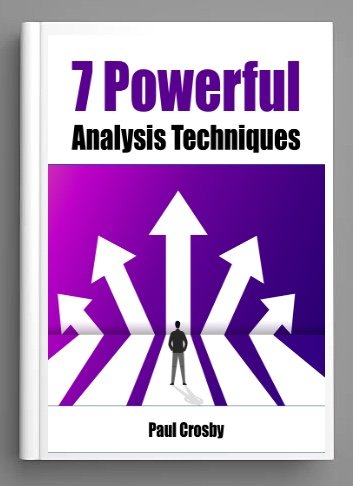Employing CATWOE in Agile Environments: Crafting a Vision for Success
In the dynamic realm of Agile development, establishing a clear vision and well-defined goals is paramount for steering projects towards success. Business Analysts (BAs) and Product Owners (POs) play a crucial role in this strategic process, employing a variety of business analysis techniques to ensure that the development efforts are aligned with the overarching objectives of the project. One such potent technique is CATWOE, an acronym that stands for Customers, Actors, Transformation Process, Worldview, Owner, and Environmental Constraints. This article delves into how BAs and POs can leverage CATWOE in Agile environments to develop a coherent vision and set attainable goals, thereby fostering better project outcomes.
Understanding CATWOE
CATWOE is a strategic tool used in systems analysis and design to understand and define a system's purpose and scope. It provides a comprehensive framework for considering different perspectives and aspects of a problem situation, making it an invaluable tool in the business analyst's toolkit. Here's a brief overview of the CATWOE elements:
- Customers: The beneficiaries or victims of the system.
- Actors: Those involved in executing the system's processes.
- Transformation Process: The conversion of inputs into outputs by the system.
- Worldview: The big picture that explains why the system exists.
- Owner: The individual or entity that has control over the system.
- Environmental Constraints: External factors that impact the system's operation.
CATWOE in Agile Vision and Goal Setting
In an Agile environment, where flexibility and adaptability are key, CATWOE can be instrumental in crafting a clear vision and defining project goals. Here's how BAs and POs can utilize each element of CATWOE for this purpose:
1. Customers (C): Start by identifying the end-users or beneficiaries of the product being developed. Understanding their needs, pain points, and expectations can help in shaping a vision that is customer-centric, ensuring that the Agile team is focused on delivering value to those who matter most.
2. Actors (A): Recognize the roles and responsibilities of team members involved in the project. This understanding facilitates effective collaboration and communication within the Agile team, ensuring that everyone is aligned with the project's vision and goals.
3. Transformation Process (T): Define the key processes or steps the team will undertake to transform project inputs (requirements, user stories) into valuable outputs (product features, enhancements). This clarity helps in setting realistic goals and benchmarks for the Agile team.
4. Worldview (W): Establish the broader context or the "big picture" that the project aims to address. This could be a market need, a business objective, or a technological innovation. A well-defined worldview helps in articulating a compelling vision that motivates and guides the Agile team.
5. Owner (O): Identify the stakeholders or entities with ownership or vested interest in the project's outcomes. Engaging with the owners ensures that the project vision and goals are aligned with broader business or organizational objectives, securing support and resources for the project.
6. Environmental Constraints (E): Acknowledge the external factors that may influence the project, such as regulatory requirements, market conditions, or technological limitations. Understanding these constraints is crucial for setting achievable goals and anticipating potential challenges.
Leveraging CATWOE for Agile Success
By applying the CATWOE analysis, BAs and POs can develop a comprehensive and nuanced understanding of the project landscape. This holistic view enables them to craft a vision that is not only aligned with stakeholder needs and organizational objectives but also adaptable to the changing dynamics of Agile development. Furthermore, the clear articulation of goals informed by CATWOE ensures that the Agile team has a concrete direction and purpose, enhancing focus, efficiency, and collaboration.
Building a Clear Vision
For Business Analysts and Product Owners navigating the complexities of Agile environments, CATWOE offers a structured and strategic framework for defining a clear vision and setting attainable goals. By considering the multifaceted aspects of the project ecosystem through the lens of CATWOE, BAs and POs can ensure that the Agile team is equipped with a strong sense of purpose and direction. This strategic alignment not only optimizes the Agile development process but also significantly contributes to achieving better project outcomes, ensuring that the end product resonates with customers and meets the overarching objectives of the organization.
Unlock your full potential as a Business Analyst with our game-changing online course! Tailored for the analytical minds eager to lead, innovate, and transform, this course is your gateway to mastering the most effective business analysis techniques. Whether you're looking to excel in Agile, shine in Waterfall, or innovate in uncharted territories, our expert-led curriculum is designed to elevate your skills, boost your career, and make you the go-to strategist in any room. Join us, and become the catalyst for change your organization didn't know it needed!
Ready to up your business analyst game? Let’s explore 7 powerful techniques that are shifting the business analysis landscape with expert insight from business analysis pros.
7 Powerful Analysis Techniques Book
Amazon Kindle $9.99
Uncommon Book of Analysis Techniques Book
PDF Download $75.00



